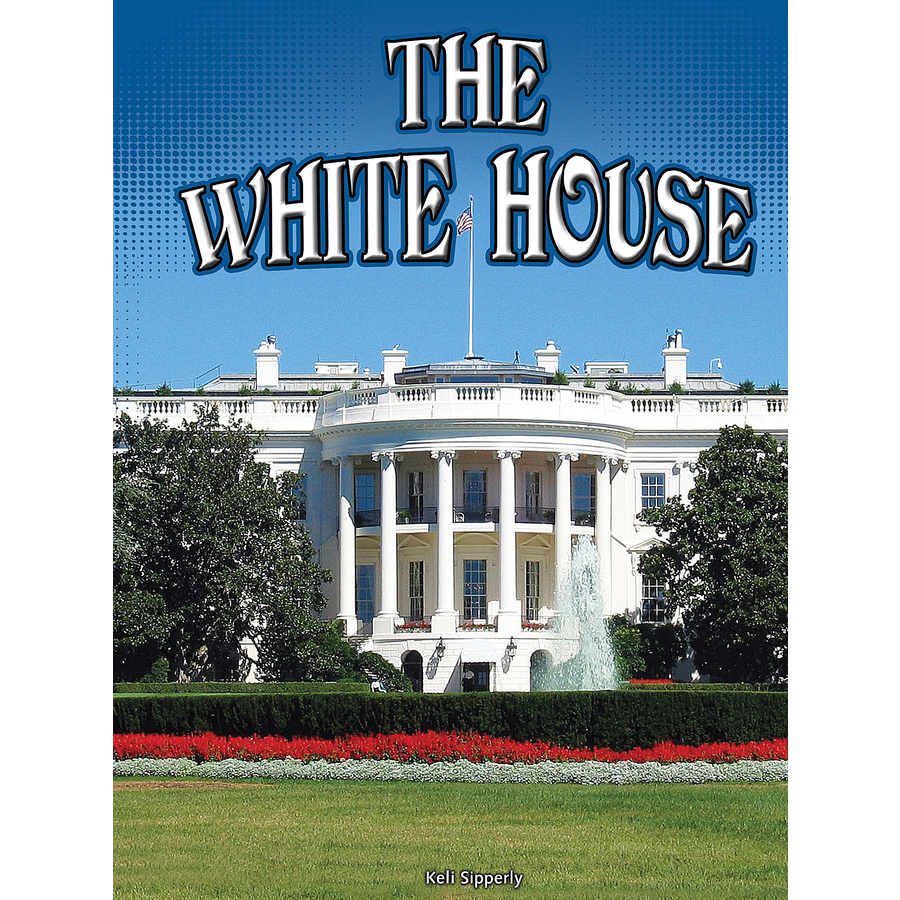Table Of Content

This renovation reflected the Beaux-Arts style, influenced by European precedents in art and design. In 1792, Hoban entered a competition organized by the Commissioners of Public Buildings to design the presidential mansion and submitted preliminary drawings for the residence. Out of the submitted entries, President George Washington selected Hoban’s neoclassical design for the White House likely because it aligned with the new republic’s vision of itself connected to Ancient Greek and Roman democratic ideals. The White House was designed by Irish-born architect James Hoban, who won a design competition held in 1792. Hoban oversaw the construction process involving enslaved laborers, local D.C. After the White House was set on fire during the War of 1812, Hoban was appointed to rebuild it.
“The Back Building”
Latrobe also redecorated the interiors, landscaped the grounds in a picturesque manner with terraces, and added low, single-story wings to provide for storage and other household necessities (as at Monticello) on the east and west. Hoban was again in charge of construction between 1815 and 1818, rebuilding after the August 1814 burning by British troops. The White House serves as the official residence and workplace of the President of the United States.
Was It Always Called the White House?
This highlights the role of architecture in reflecting and shaping national identity. Lastly, the White House underscores the importance of sustainable and eco-friendly design. Over the years, various modifications have been made to the building to improve its energy efficiency, such as adding a solarium during the Coolidge administration. This underlines the role of architecture in promoting environmental sustainability.
Building the White House in Washington, D.C.
A History of the White House: The US President's Home - The Collector
A History of the White House: The US President's Home.
Posted: Tue, 28 Nov 2023 08:00:00 GMT [source]
When President Harry S. Truman moved into the White House in 1945, he became concerned about the state of the building. In 1947, a chandelier in the Blue Room almost fell on Bess Truman and her guests from the Daughters of the American Revolution, and in 1948, the leg of Margaret Truman’s piano pierced through the floor of what is now the private dining room. Engineers confirmed that the building was at risk of collapse, and Truman and his family relocated to Blair House, the president’s guesthouse located nearby at 1651 Pennsylvania Ave. Set on 18 acres of land, the White House is made up of the Executive Residence, the East Wing, and the West Wing, with its famous Oval Office. Today, the residence includes six levels with 132 rooms, including 16 family and guest rooms and 35 bathrooms, and is spread over 55,000 square feet. The White House has been home to every president from John Adams to Joe Biden, and it is an enduring symbol of democracy and one of the most recognizable buildings in the world, attracting 500,000 visitors annually.
But what documentation exists today shows that many of Washington, D.C.’s most iconic government buildings, including the White House, were built by enslaved people. The White House and its landscaped grounds occupy 18 acres (7.2 hectares). Since the administration of George Washington (1789–97), who occupied presidential residences in New York and Philadelphia, every American president has resided at the White House. Originally called the “President’s Palace” on early maps, the building was officially named the Executive Mansion in 1810 in order to avoid connotations of royalty.

It includes a billiards room, a workout room, a solarium, and a music room added by the Clinton family. Above the pantry, the Usher’s office, and the lobby elevator on the first floor is a mezzanine that includes some small closets, another pantry for pastries, and the clock room. Except for the entrance hall, which ceiling is 5.80 meters high, and the east room at 6.10 meters, the rest of the ceilings rise to 5.50 meters. The first floor of the White House is often called the “State Floor” because this is where formal state receptions are held. This floor is on the same level as the second floor of the West Wing and the East Wing, as the residence sits on the upper floor.
7 Design Ideas Inspired By The White House – Forbes Home - Forbes
7 Design Ideas Inspired By The White House – Forbes Home.
Posted: Wed, 14 Feb 2024 08:00:00 GMT [source]
White House Down: War of 1812 & Burning of Washington
Historic payroll reports document that many of the workers who built the White House were African Americans—some free and some enslaved. Working alongside white laborers, the African American workers cut sandstone at the quarry in Aquia, Virginia. They also dug the footings for the White House, built the foundations, and fired bricks for the interior walls. During the War of 1812, the United States burned Parliament Buildings in Ontario, Canada. So, in 1814, the British Army retaliated by setting fire to much of Washington, including the White House. The inside of the presidential structure was destroyed and the exterior walls were badly charred.
Who Was the First President to Live in the White House?
The White House was designed by Irish architect James Hoban, whose winning design was selected by President George Washington in a competition for the honor of designing the home of the American president. The original laborers and stonecutter constructing the White House were African American slaves hired from their owners. Many other cultures were represented at the construction site; most of the crews were comprised of immigrant skilled workers and independent laborers. As an example of this cultural diversity, the stone masons were Scots and the designer of the President’s house was Irish. By 1800 the White House was occupied, but it was not completed until 1803. In 1807 Benjamin Henry Latrobe redesigned the north and south fronts, adding monumental porticoes that were carried out in slightly altered form by Hoban in 1824 (south) and 1829 (north).
The White House’s symmetrical façade with towering Roman-inspired columns, triangular pediments, and decorative dentils and metopes reflected classical Greco-Roman elements that signified the democratic ambitions of the new federal government. When architect Pierre Charles L'Enfant drafted the original plans for Washington, D.C., he called for an elaborate and enormous presidential palace. L'Enfant's vision was discarded and architects James Hoban and Benjamin Henry Latrobe designed a much smaller, more humble home. Still, the White House was grand for its time and the biggest by far in the new nation.
Historians believe Hoban based his White House design on a local Dublin residence, the Leinster House, the Georgian style home of the Dukes of Leinster. The Leinster House in Ireland is now the seat of the Irish Parliament, but before that it likely inspired the White House. Ohio-born architect Cass Gilbert borrowed from the architecture of ancient Rome when he designed the building.
The blaze destroyed much of the interior and charred most of the exterior. Though President Washington oversaw the White House’s plan and build, he never lived there. Instead, it was first lived in by President John Adams and his wife, Abigail, the latter of whom was disappointed at its unfinished state, and used the East Room as a place to hang her washing rather than entertain the public. His 3-story, 9-bay original submission was altered into this 2-story, 11-bay design. The White House requires 2,170 liters of paint to cover its exterior surface.
The building designed by Hoban was based on the first two floors of the Leinster House he had already built in Dublin, now the headquarters of the Irish Parliament. August of 1814 saw British raids along America’s coast, with the Brits emboldened by their recent defeat of Napoleon in Europe and a desire to keep the United States focused away from Canada. On August 24, the British defeated the Americans at the Battle of Bladensburg and then moved on to Washington DC. In retaliation for the American burning of York, Ontario the previous year, the British forces set fire to the White House, the Capitol, and other government buildings. Despite all his tweaks, Jefferson did not change the appearance of the house substantially. Although this was not the residence that he would have built himself, he recognized it as part of George Washington’s legacy and saw the need for continuity.
Large glass greenhouses were built on both sides of the mansion, providing flowers and plants of all kinds, as well as a pleasant place to talk or read a book. The construction of a mansion for the president’s family and his staff was approved when Congress established the District of Columbia as the permanent capital of the United States on July 16, 1790. Construction began on October 13, 1792, when the cornerstone was laid, and although Washington never lived in the presidential house, he supervised its construction. Most of the work was done by African Americans, some free, others enslaved.
It has a columned central entrance on each side with a triangular pediment above the two-story porch, decorated with dentils and metopes. The columns are stately Roman-influenced Tuscan order, while the south façade boasts Ionic order columns. The walls have rusticated stone on the two lower floors, with smooth dressing on the upper floor. The neoclassical elements also extend to the interiors with features like curving walls, high domed ceilings, and marbled ionic column capitals in the Oval Room. The reasons behind the neoclassical style during the early Republic period were aesthetic and ideological.
An arch he had built on the east side, marking the entrance to the guest wing, collapsed, but was later rebuilt with a different design and survived until 1859. Originally, plans for a "President's Palace" were developed by the French-born artist and engineer Pierre Charles L’Enfant. Working with George Washington to design a capital city for the new nation, L'Enfant envisioned a majestic home approximately four times the size of the present White House. Many an American president has battled for the privilege to live at the nation's most prestigious address.
After the republic almost crumbled during Shays’ Rebellion ( ), many people wanted to reform the Articles to provide more executive power to maintain order and security. George Washington, the hero of the American Revolutionary War, agreed to preside over this convention when it met in Philadelphia during the summer of 1787. 1791 To appease northern and southern interests, President George Washington selects the site for the capital city. George Washington died on December 14, 1799, before the President’s House was finished. The building begun in 1792 had taken eight years to be ready to house the president, but Washington would not live to see it. On November 1, 1800, John Adams became the first president to occupy the building, as required by the Residence Act, but he lived there just four months before he lost office.

No comments:
Post a Comment